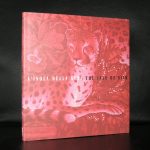
Roger Vivier, also known as the Fabergé of footwear, was born in 1907. He was a true master in his craft, creating shoes that were a fusion of function and artistry. His unrivaled talent led him to begin his sculpture studies in 1924 at the Paris School of Fine Arts. However, he soon abandoned this path to pursue shoemaking and start an apprenticeship.
With a deep-rooted fascination for the world of theatre and music halls, Vivier also dabbled in stage design. It was during one such occasion backstage that he had the pleasure of meeting renowned performers Josephine Baker and Mistinguett. Intrigued by their individual styles and needs, Vivier began creating custom-made shoes for them.
In 1937, following the overwhelming success of his footwear creations, Vivier opened his first boutique on the fashionable rue Royale in Paris. He quickly became renowned for his expertise in heels – the Aiguille stiletto, first launched in 1954, and the sinuous Virgule heel, considered the manifesto of his eponymous label since 1963. Vivier’s passion for feminine elegance and his innate ability to transform shoes into works of art earned him a well-deserved place as a master artisan, collaborating with celebrated French embroidery houses.
His designs caught the attention of exceptional women, with Queen Elizabeth II donning a pair of his shoes on her coronation day in 1953. Vivier’s acclaimed creations were sought after by the most prominent personalities of his time: the Duchess of Windsor, Princess Soraya of Iran, Hollywood icons Marlene Dietrich and Elizabeth Taylor, and French star Brigitte Bardot. One of his most iconic designs, featuring a silver buckle, made its first appearance in the film “Belle de Jour” on actress Catherine Deneuve.
Roger Vivier’s legacy lives on, with his masterpieces continuing to inspire and adorn the feet of women across the globe. His name will forever be associated with impeccable craftsmanship, unparalleled elegance, and timeless sophistication.
www.ftn-books.com has now 2 titles on Vivier available.





























































